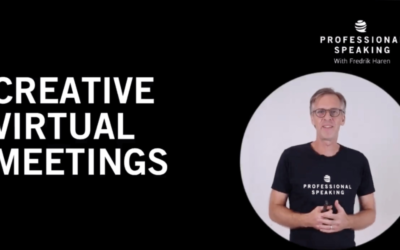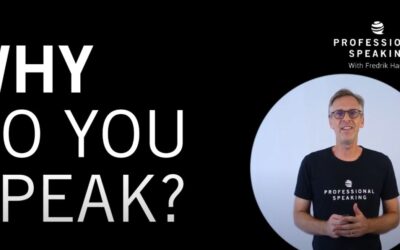
“That speech made me uncomfortable!”
The words came from Mohammed Ismaeel, SVP Marketing, CEMEA for VISA at he went up on stage to deliver his speech at the VISA CEMEA Leadership Meeting.
Mohammed was referring to the speech that I had delivered on the same stage just minutes before.
Now, many non-speakers might feel uncomfortable if someone goes up and referencing your speech as making them feel uncomfortable, but I smiled, because to me, as a professional speaker, the fact that my speech has made someone “uncomfortable” is a sign of success.
Mohammed continued from the stage: “A great speech should shake you up, make you think, move you outside your comfort zone. And that is just how I feel right now.”

In the break after our speeches I went up to Mohammed and asked him to elaborate. He told me that as a VP of Marketing of VISA he instructs his agencies to come up with ideas that make him, as a client, feel uncomfortable.
He does that for the same reason he wants a speech to make him uncomfortable – he wants to be mentally moved. He wants to be pushed.
In my speech for VISA today I pushed the audience hard, and I did it because VISA is in the eye of the storm when it comes to change – “fintech” the innovation and disruption happening in the financial sector thanks to technology – is almost mind-blowing and VISA is in the middle of all of that.
That means that VISA needs to be good at seeing, understanding and reacting to change.
Thus the reason that I was invited as the only external keynote speaker when 150 of the top managers of VISA at the VISA CEMEA Leadership Meeting at Waldorf Astoria, Ras Al Khaimah, UAE.
To make an audience feel uncomfortable is risky – but rewarding.
Done wrong and the audience can turn on you.
Done well and the audience gets moved.
So how do you strike the right balance of pushing without pushing too far?
First of all: Be very observant of how the audience is reacting.
Push gently first and then push slightly more and more until you feel you get push-back.
Second: It helps if you remember that the word “uncomfortable” comes from “comfortable” with a “not” infront of it. In other words, you are there to make them “not be comfortable”. I like that way of thinking more than thinking of “uncomfortable” as meaning: “causing or feeling unease or awkwardness” which is the dictionary’s definition of “uncomfortable”.
Questions to ask as a speaker before you go up on stage next time:
- Am I pushing the audience far enough?
and at the same time: - How do I make sure I do not push them too much?




